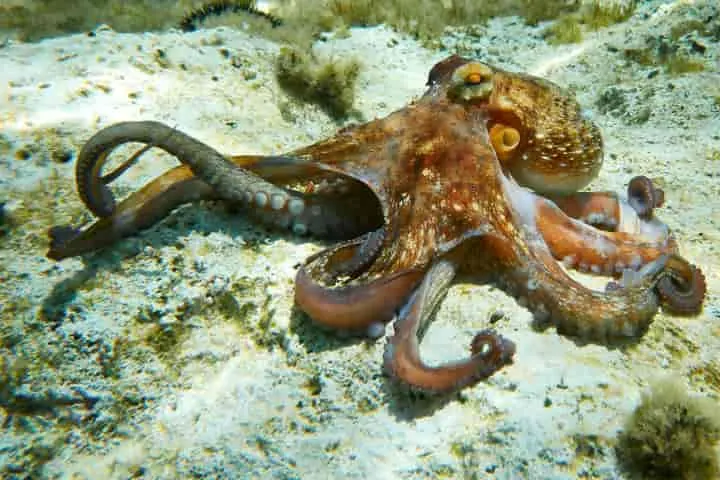Octopuses have been known to be intelligent as compared to several other creatures in their category – invertebrates. And now a new study brings to light one of the reasons for this and that is a specific molecular likeness with the human brain, as per a report in sciencealert.com.
It has been found that among the human beings and the octopuses there is a large number of transposons or ‘jumping genes’ and what makes these genes special is their ability to copy themselves or move around the genome. Significantly, these transposons are vital building blocks for the process of evolution.
During the study, the researchers found in one part of the octopus’s brain transposons that hail from the Long Interspersed Nuclear Elements or LINE family. Incidentally, this region of the brain is devoted to taking care of cognitive abilities. This is the same spot in which they are found in human brains too.
Reacting to this find, Giovanna Ponte, who is a biologist in Italy’s Stazione Zoologica Anton Dohrn research institute said: "I literally jumped on the chair when, under the microscope, I saw a very strong signal of activity of this element in the vertical lobe, the structure of the brain which in the octopus is the seat of learning and cognitive abilities, just like the hippocampus in humans.”
Scientific research done recently has shed light on how in the human brain, the LINE transposons are controlled carefully. It is thought that they play a vital role in memory and learning. This is because they have been found to be very active in the hippocampus – the region from where the processes of learning are controlled.
The jumping genes were found in the same spot in the brain of two species of octopuses. One is the common octopus or Octopus vulgaris and the other is the Californian octopus or Octopus bimaculoides. This the scientists feel is the main reason for the creatures to be highly intelligent.
Going beyond the use of molecular copy-and-paste and cut-and-paste mechanisms, the transposons research suggested has a direct link to the complexity of the nervous system, including the brain. Highlighting this computational genomicist Remo Sanges observed: "The discovery of an element of the LINE family, active in the brain of the two octopuses species, is very significant because it adds support to the idea that these elements have a specific function that goes beyond copy-and-paste.”
Sanges is from Italy’s Scuola Internazionale Superiore di Studi Avanzati research institute.
The scientists feel that this discovery about the octopuses is a case of convergent evolution.
Convergent evolution means the independent development of similar traits in species which are not related and which provide the same adaptation – in this case of superior cognitive abilities.
Octopuses continue to amaze scientists with evolutionary tricks and neurological responses which place them at a pedestal and make them distinctive among the invertebrates. This makes them seem similar to mammals in terms of brain structure and its activities.
Biologist Graziano Fiorito who is from Stazione Zoologica Anton Dohrn remarked: "The brain of the octopus is functionally analogous in many of its characteristics to that of mammals. For this reason, also, the identified LINE element represents a very interesting candidate to study to improve our knowledge on the evolution of intelligence."
Details of this research have appeared in BMC Biology, a biology journal.




















